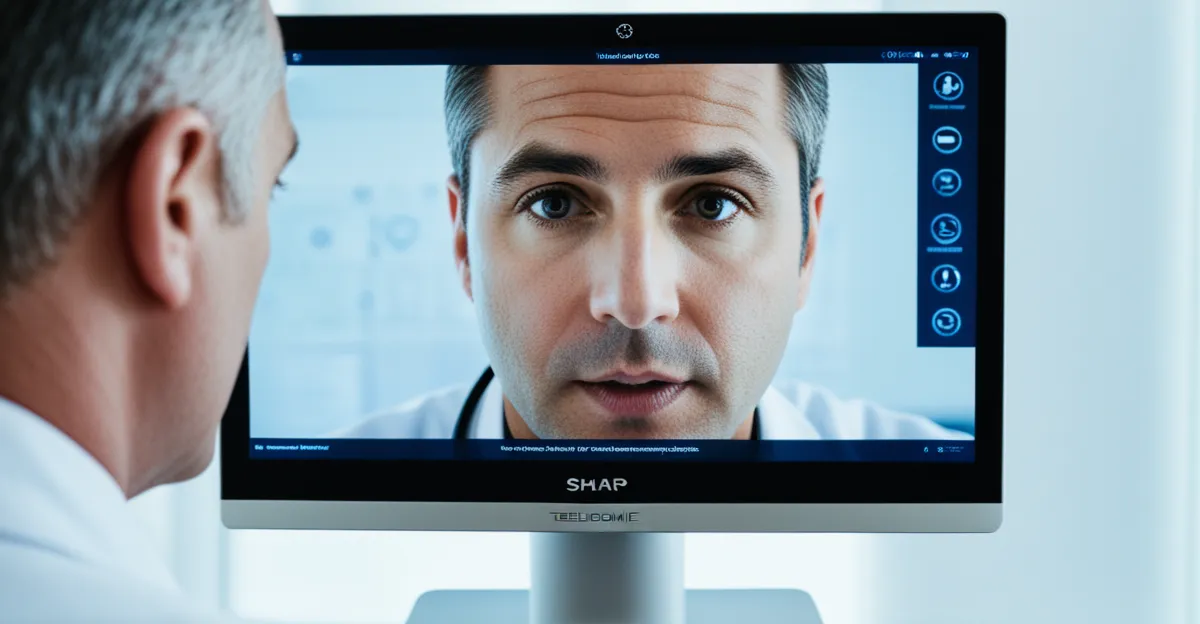Overview of Telemedicine in the UK
Telemedicine in the UK has seen substantial growth in recent years, transforming how healthcare is accessed. Historically, the adoption of telemedicine began as an innovative solution to improve healthcare access across the nation, especially in regions with limited medical facilities. Over time, its integration into the digital health landscape has been accelerated by technological advancements and policy shifts, making it a vital component of modern healthcare.
The current landscape of telemedicine in the UK reflects a dynamic mix of traditional and digital health services. Usage statistics indicate a significant rise in digital consultations, particularly during health crises, where telemedicine proved essential in maintaining continuity of care. The widespread adoption can be attributed to its convenience and efficiency, providing patients with timely access to specialists without the need for physical travel.
Topic to read : How does the UK’s healthcare funding impact service quality?
Comparative studies with traditional healthcare delivery methods reveal several advantages of telemedicine. It offers healthcare access that is not restricted by geographical constraints, making it particularly beneficial for rural and underserved communities. Furthermore, telemedicine facilitates a seamless integration of technological solutions into patient care, enhancing the overall healthcare experience. As the UK continues to embrace digital health, its potential to revolutionize healthcare delivery remains evident.
Long-Term Benefits of Telemedicine
While telemedicine is undoubtedly transforming healthcare access, it is vital to explore its long-term benefits to appreciate its full potential. Peer into this evolving realm, and you will discover how it is reshaping patient care, boosting efficiency, and influencing cost-saving initiatives.
Topic to read : How do lifestyle changes affect public health in the UK?
Improved Access to Care
The benefits of telemedicine are particularly pronounced in rural and underserved communities, where traditional healthcare access is often limited. By facilitating digital consultations, telemedicine reduces the need for time-consuming travel, thereby breaking down geographic barriers and enhancing availability of specialist services. Imagine an elderly patient in a remote village who can now easily consult with a doctor specialist without leaving her home. This enhancement significantly improves patient care continuity and ensures that more individuals receive timely medical attention.
Cost Efficiency
Another significant advantage lies in the cost savings for both patients and the healthcare system. Telemedicine reduces the need for in-person visits, which often equate to fewer emergency room visits and hospitalizations. This not only saves money for patients who might otherwise incur travel and accommodation costs but also lessens financial strain on healthcare providers. As a ripple effect, telemedicine fosters an economically sustainable healthcare ecosystem, ensuring resources are allocated where they are genuinely needed.
Enhanced Patient Outcomes
Telemedicine’s impact goes beyond cost and access; it also enhances patient outcomes. With improved treatment adherence facilitated through digital health tools, patients with chronic conditions can manage their health more effectively. Regular follow-up care, easily facilitated through telehealth services, ensures that any issues are promptly addressed, fostering higher levels of patient satisfaction. Indeed, studies reflect increased patient engagement and a more positive healthcare experience when telemedicine is integrated into their care journey.
Technological Advancements and Innovations
In the evolving world of telehealth technology, the UK stands at the forefront, leveraging digital tools to enhance healthcare delivery. Recent advancements underscore the integration of AI in healthcare, facilitating smarter and more efficient digital consultations.
Current Technologies in Use
The UK’s telemedicine landscape is supported by a robust array of platforms designed to streamline healthcare processes. Mobile applications play a crucial role, enabling patients to access medical advice and consultations whenever needed. Additionally, wearable technology allows real-time monitoring of vital signs, crucial for managing chronic conditions. Moreover, the integration of electronic health records with telehealth services ensures seamless access to patient history, improving the diagnostic process.
Future Innovations
The horizon for telemedicine in the UK is filled with promising advances in AI and machine learning. These technologies hold the potential to deliver highly personalised care, offering predictive analytics for better health outcomes. Future innovations include new digital tools that aim to enhance patient engagement, ensuring that healthcare solutions are both scalable and adaptable to meet the diverse needs of the UK healthcare system.
Technological evolution continues to propel the UK’s telemedicine capabilities, positioning the nation as a leader in digital healthcare innovation. By embracing these advancements, the UK not only elevates patient care but also sets new standards for global health technology.
Regulatory and Policy Considerations
In the rapidly evolving landscape of telemedicine in the UK, navigating the intricacies of regulation and policy is crucial for sustainable growth and effective healthcare delivery. Understanding the current and future policy directions is essential for stakeholders involved in the development and implementation of telemedicine services.
Current Regulatory Landscape
The UK’s telemedicine operations are predominantly governed by a framework of regulations designed to ensure healthcare quality and patient safety. Central to this framework is the role of the National Health Service (NHS) guidelines, which provide directives on the use of telehealth practices. These guidelines encompass various aspects of service delivery, reinforcing the importance of compliance with privacy and security standards to protect patient data. Ensuring patient confidentiality and the secure handling of health records is paramount as healthcare transitions further into the digital realm.
Future Policy Directions
As telemedicine continues to transform healthcare delivery, it is anticipated that regulatory changes will emerge to better accommodate these advancements. Upcoming reforms are likely to focus on balancing accessibility with stringent governance, making it imperative to align public health policies with the growing needs of telehealth. Engaging different stakeholders, including healthcare professionals and regulatory bodies, is critical in shaping policies that support telehealth growth while safeguarding patient interests. The future of telemedicine in the UK hinges on crafting policies that are flexible enough to foster innovation yet robust enough to maintain trust and reliability in healthcare services.
Case Studies and Statistics
The success of telemedicine in the UK is unmistakable, as evidenced by numerous telemedicine case studies revealing improved healthcare outcomes. These insights underscore telemedicine’s growing integral role in transforming patient care.
Successful Implementations in the UK
Leading cases demonstrate the effectiveness of telemedicine in delivering swift and accessible health services. One notable example is a pilot project in rural Scotland, where virtual consultations provided vital specialist access, reducing the need for travel and enhancing patient satisfaction. Here, telemedicine’s ability to dismantle geographical barriers significantly increased the reach of healthcare services.
Statistics on Patient Outcomes
Statistical data supports the notion that telehealth improves patient outcomes significantly. Analyses reveal a 30% reduction in non-urgent emergency visits in clinics using telemedicine, illustrating its capacity to manage chronic conditions effectively. Furthermore, chronic disease patients reported increased treatment adherence due to consistent monitoring and follow-up available through telehealth.
Lessons from Case Studies
Lessons from these case studies are invaluable in steering future telehealth strategies. For instance, integrating patient feedback mechanisms in telemedicine systems can enhance service delivery and patient satisfaction. Moreover, adopting customised digital solutions caters to diverse patient needs, fostering a resilient and patient-centered healthcare model. These reflections lay the groundwork for advancing telemedicine practices across the UK.

